Morocco: Marrakesh and Beyond
- Annie Mason
- Dec 29, 2022
- 14 min read
Updated: Jan 18, 2024
The High Atlas and Saharan Morocco
Trip Length: 2 weeks
Trip Budget per day: € 60 a day for a couple (Accomodation €30 a night, Car Hire €15, Everything else €15)
GENERAL INFORMATION
Morocco is a large and very diverse country in North Africa that has a coastline on both the North Atlantic Ocean and the Mediterranean Sea.
It is made up mainly of Arabs with Berbers (from the mountains) and Tuareg (from the desert). Morocco became independent from France in 1956 and French is still spoken everywhere. Morocco annexed much of the Western Sahara, a former territory of Spain, in 1975. There is a parliament but the King still has the actual political power. The media is mostly state controlled. There is wide spread corruption and a very weak education system, so there is still a way to go politically and economically.
Do you know what a Kasbah is? The Arabic word for buildings in a keep, a citadel, or several structures behind a defensive wall. ... A kasbah was a place for the local leader to live and a defense when a city was under attack. A kasbah has high walls, usually without windows.
PRACTICAL MATTERS
When to visit: Summer is scorching so the tourist season is September to April , with the peak over Christmas. Marrakech is a popular long weekend or short stop trip for Europeans.
Safety: Marrakech requires all the usual safety of any city and does have its fair share of scams. Morrocan Sahara is generally safe. In general you need to remember that unemployment is high. You need to expect people to be doing what they can to make a living. They will offer to be your guide and walk with you. They may even cross the line. It is common on tourist roads for men to flag your car down with a story that they need a lift to the next village, maybe their car is broken down. They will have watched for foreigners (they can pick you as you drive with your headlights on) and walk confidently onto the road hailing you. They speak English, tell you about their children, joke with you and to show you their gratitude for the lift take you to a shop (my brother’s house) for tea and then the sales pitch starts. On the surface they are harmless, and if you offer them a lift you can refuse the offer of tea or go determined not to buy. They must be getting sales from it or they wouldn’t do it! But letting them into the car requires you take lots of precautions to make sure it isn’t more sinister. They may also approach you and say “this way to the market” as if they are just being friendly, but will start to chat and walk with you and then ask for money.
We even had one man say “ your hotel sent me to collect you so you wouldn’t get lost” (after a quick talk to the taxi driver who dropped us off). Then you discover he wants money. So , just be prepared.
Some people have expressed concern that police have stopped them at one of the many check points and asked for money. There are certainly a lot of check points and police with speed cameras, but we never encountered anything inappropriate.
Necessities: All small towns have plenty of good quality pharmacies where you can get most of necessary stuff and there is always small local shops with bread and basic foods/
Money Matters: Most small towns have at least one ATM. The charge per transaction is high $3.50. There are not many inside banks. There are money changers in most large cities. Credit cards are used in most hotels, petrol stations and large supermarkets and shops.
Communication: Be warned that places and hotels may have 2 or 3 names (French, Berber and English), so that makes maps a bit tricky. If you can’t find a place it probably means you didn’t use the right spelling. French is widely spoken, as is Arabic and many Moroccans also have Berber or a traditional dialect. It is useful (and fun) to have a “travellers vocabulary” in all 3.
Electricity
The usual 2 prong round European plug.
Shopping and Eating
Every town has a souk and every souk has basically the same items for sale, all that varies is the starting price. The Medina in Marrakech is naturally more expensive, no better quality and more pushy for a sale. There is a multitude of bags, rugs, silver jewellery, camels, leather goods, spices, shirts….the list goes on.
Eating is easy and cheap. Even in the Medina (the most expensive) 2 can eat a meal with drinks (not alcohol) for around $10. The local favourite is Tarjine. These are chicken, lamp or beef and are basically meat with vegetables and spices (cumin, ginger) cooked in the special tall pointed ceramic pot. Really nice, tender and tasty. Of course, burgers, Moroccan Tacos and pizza are also widely available. The Moroccans love their bread and their bread is a mix of French and Morrocan flat rolls (all lovely and all plentiful every meal).
Places to stay
Remember tax is added $4 a night per person per room- so that will increase your hotel budget (it is usually added as a cash extra).We use Booking.com and found the usual variance in quality. We only choose a rating of 9 or above, but did find some poor quality places. Normally, we would recommend you stay in the old city (medina) but in the case of Marrakech I would say it isn’t necessary. There is not a lot of attractions there (unlike Jerusalem, Amman, Cairo etc) where there is so much “action” , sights and great food in the old city, it is the must stay place. The Medina generally has lower quality accommodation (unless you pay a lot). I suggest one of the mid-range hotels just outside the Medina and drop in when you want to visit. There is a lot of work being done on Marrakech and some great hotels are in the shopping areas.
GETTING IN AND OUT AND MOVING ABOUT
Airport: The airport is new and modern. There are the usual ques at peak times and some limitations (we got our first ever handwritten boarding pass as the machine was broken). It is a hub for charter flights and low cost carries for European weekenders. The taxis have a bit of a system going and try for €20 for the 15 mins into town. The man who walks you up to the taxis- is not the driver- but someone who welcomes you to Morocco by asking for money for walking beside you for 50 meters. The taxi rank is straight ahead as you exit. You will probably have to pay €15- so if you hotel offers a pick up under that- take it.
Train: The main train station in Marrakech is modern and well kept.
Car: Rental cars are not as cheap as Europe at around €15 a day but still the best way to see everything. If you’re are heading to the desert and want to explore the mountains they are the best. The papers to show the police (you will get stopped at some point) are in the glove box and are important. Fuel is European prices but diesel cars are still common and cheaper to run. Roads are generally good, although mostly single lane on each side. In Morocco there are lots of police controls for speeding (with laser gun). These are on all main roads between the coast and cities (Rabat, Agadir, Essaouira, Marrakech, Ouarzazate, Casablanca). So be aware especially on the roads where the maximum speed is 40 or 60 km/hr.
Bus/Shared Taxis: The beige Mercedes grand taxis are for between cities and range in price. The small taxis do the local runs. Most don’t have meters.
Organised trips: There are a number of reasonably priced day trips out of Marrakech and into the desert. You want have to seek them out , they will find you!
ITINERARY
This itinerary is just about spending a few weeks in Marrakech and exploring the desert (Moroccan Saraha) and mountains in the center/south. There is a whole other blog for doing the northern and coastal areas……but that’s another adventure!
I have divided the itinerary into 3 bits:
Marrakech- Naturally everything starts form there. No car- just lots of walking.
Marrakech to M’hamid- Desert area with Erg Chigaga – A driving Itinerary
Merzouga- Desert area with Erg Chebbi via Valley of the Roses- Driving an additional route to see the other desert area.
The Atlas Mountains to Marrakech- The Tizi-u- test – Pass- by road
I’ve attached a map that has a route that includes all of these but it is possible to choose one on the desert options only if you don’t have time.
MARRAKECH ( 4 nights)
Marrakesh, a former imperial city in western Morocco, is a major economic center and home to mosques, palaces and gardens. It has an old walled city (Medina) and a modern commercial hub. There are some great day trips but the city is more about atmosphere that great sights.
Marrakesh Medina: The medina is the old historic part of town with high mud walls. The medina is a densely packed, city dating to the Berber Empire, with mazelike alleys where thriving souks (marketplaces) selling traditional textiles, pottery and jewellery. The highlights of the Medina are listed below:
Djemaa El Fna : Jemaa el-Fnaa is a square and market place. Unesco declared the Djemaa El Fna a 'Masterpiece of World Heritage' in 2001. Djemaa's nightly carnival ( Berber musicians, singing troupes, henna tattoo artists, snake charmers, boxing matches, food). To get a good seats around musician circles, arrive early in the evening and sit in the square or in go up to one of the many cafes with prime seats overlooking. The halqa (street theatre) has been happening here since this plaza was the site of public executions around AD 1050 – hence its name, which means ‘assembly of the dead’. The show doesn't really get going until sunset. Remember, stopping to look will cost , so come with coins.
Bab Debbagh Tanneries: You will smell them before you see them. There are actually 2, an Arabic and a Berber Tannery right beside each other. They will guide you through for a donation and provide you with mint to hold under your nose to hide the smell. You will leave with a different appreciation for that leather jacket you are wearing. The 1000 year old dying and soaking pits are still in use. You'll find tanneries scattered on either side of Rue de Bab Debbagh – generally with touts stationed at the gates.
Koutoubia Mosque: The minaret is a distinctive landmark you can see for all around the city.
Saadian Tombs: The Saadian tombs date to time of the Saadian dynasty sultan Ahmad al-Mansur. They are located on the south side of the Kasbah Mosque. Abandoned for centuries, the tombs were rediscovered in 1917.
Bab Agnaou: 11 century historic gate, Bab Agnaou is one of the nineteen gates of Marrakesh, Morocco. It was built in the 12th century in the time of the Almohad dynasty. While Bab er Robb was the official entrance to the city, Bab Agnaou gives entrance to the royal kasbah in the southern part of the medina of Marrakech.
Bahia Palace: The Bahia Palace is a palace and a set of gardens built in the late 19th century, intended to be the greatest palace of its time. The name means "brilliance".
Badi Palace: As 16th-century sultan Ahmed Al Mansour paved the Badi Palace with gold, turquoise and crystal in 1578. The palace's construction was funded by a substantial ransom paid by the Portuguese after the Battle of the Three Kings.
OUTSIDE TOWN: DAY TRIPS
El Palmeral: Marrakech’s palmeraie has over 100,000 palm trees. These were planted during the Almoravid dynasty (eleventh and twelfth centuries) in 13,000 hectares. The city’s palm grove is now considered an up-market place to live and to stay in Marrakech. You can get a taxi to the Hotel Palmerale to have a drink, ride a camel or take a quad bike in the desert.
Ourika River: A valley (at 1500 meters) with a river that comes from the High Atlas and 7 waterfalls , is best done as a day trip from Marrakech. It isn’t on the P2021 that leads to Ouarzazata or t really on the R 203 that leads to Imil (but is probably easier to get to from this side). You could cut in from either road but it is a big detour unless you leave time . It is 60km from Marrakech but will take 2 hrs to get there along the valley. Look for Sitti Fadma as that is the main place and has accommodation and food and is the start point for the waterfalls. The first waterfall is only 30 min walk in to a small pond at the bottom. The 6 other water falls take another 2 hrs along winding paths with great views. Be warned however, Morocco is in a drought and water levels are VERY low. The valley itself is however stunning, with red soil, panaromic views, cherry trees and valley roads, water or no water.The Safranière of Ourika. Nearby, in the village of Tnine is a Saffron farm and The Garden of Timalizene
Gardens: There are several great gradens surrounding the old city. Menara Gardens: The Menara gardens are botanical garden, established in the 12th century by the Almohad Caliphate ruler Abd al-Mu'min. The name menara derives from the pavilion with its small green pyramid-shaped roof, meaning lighthouse.
North Africa’s largest cacti farms.
For a spectacular sunset, take the road west out of Tabant, and you’ll find the path leading up to this Unesco-heritage site, a zawiya (shrine) of local marabout (saint) Sidi Moussa.
MARRAKESH TO OUARZAZATE: Via Teloute and Ali Ben Houddi : 194Km 4:00 mins
It is a fantastic drive to Ouarzazate (oo-r-za-zat) over the mountains. The P2021 road is undergoing major repairs so there are some delays but even in the old bits it is a good road. The passes are at about 2000m with spectacular views to the mountains and desert. The 200km trip from Marrakech takes about 4 hours but leave early for a full day as there are some good short stop overs on the way. There are 2 main stops on the way:
Telouet: Glaoui Kasbah . The once-glorious stronghold has been left to crumble, but is still magnificient. Ait Ben Haddou is popular for the filming of the Game of Thrones but Teloute is MUCH better and worth the detour.
Ait Ben Haddou: The film site for Game of Thrones and one of the best preserved Kasbahs. It has been declared a World Heritage Site by UNESCO. And Walk across the river and around to the right and enter from the back to avoid ticket sellers (self appointed).
OUARZAZATE (2 nights)
Ouarzazate (1135 meters) has about 60,000 people and is built mostly along the main street - Avenue Muhammed V. A very peasant modern and wealthy town on a river in a valley. The movie industry and the military have made this a clean and tastefully traditional small city. This is a popular first night stop for trips on the way to the desert and the point where the 2 desert paths split- one to Merzouga and one to M’Hamid. Ouarzazate was a crossroad for African traders between northern cities in Morocco and Europe.
Don't be surprised if during a local taxi ride the driver requests you to "transfer taxis" or has "a friend to pick up on the way." When this happens, a friendly English (or other language) speaking person will start pitching you outings, most of them to an erg.
Atlas Studios. It lies about ~ 4km from town centre. Entrance ticket is 50 dirhams. Films such as Asterix & Obelix: Mission Cleopatra, Lawrence of Arabia, The Man Who Would Be King, Cleopatra, Kundun, Gladiator and Alexander, Kingdom of Heaven and Babel were shot there. Most of movie decorations are a bit crumbled, but Egyptian decorations are still impressive but in very poor condition.
CLA Studios. CLA Studios aka Dino de Laurentis Cinecitta Studios, is along the same road as Atlas Studios about a kilometer closer to Marrakech. If you can go to only one of the two studios, this is the one to go to. The Atlas Studios tour is mosly TV movies and The Mummy Returns remake. CLA has the Jerusalem set from "Kingdom of Heaven," and a host of props. 100Dh.
Taourirt Kasbah is on the edge of town has been well preserved and is a UNESCO site that has also been used in the movies (Gladiator, Prince of Persia)
Trips out of Ouarzazate
Oasis de Fint. A small paradise of vegetation in the midst of the dry hills. Only 10km by mostly unpaved roads. At the Oasis there is a restaurant.
Skoura’s: Palmeraie defining features remain its mudbrick kasbahs and vast Unesco-protected palmeraie (palm grove), earning the moniker ‘Oasis of 1000 Palms. Near by is Kasbah Amridil Morocco’s most coveted kasbah is this 17th-century wonder, which appears on Morocco’s 50-dirham note. Signposted just a few hundred metres from the main road, this living museum shows traditional kasbah life over the centuries, with hand-carved door locks, an olive oil press, still-functioning bread ovens and stalls where animals were once kept.
More Kasbahs: Tifoultoute Kasbah, Stork Kasbah, Taourirt Kasbah,
CHOOSE A DESERT ROUTE OR DO BOTH
It’s all about seeing the amazing Ergs of the Sahara (large seas of dunes formed by wind-blown sand). There are 2 main Ergs – Chebbi and Chigaga. Technically all these ergs are within an area “Pre-Saharan Steppes” and not actually the Sahara desert which is further south……but that doesn’t detract from their beauty.
Which route to choose? If you have less time and want to see the High Atlas as well you would possibly choose M’Hamid as it is closer. There is however some other great things to see on the way to Merzouga (and it does possess the tallest dunes). So if you have time, loop out – like on the map- and do both.
OPTION 1.OUARZAZATE to M’HAMID/ TAGOUNITE (ERG CHIGAGA) 230km 2:40 mins 3 NIGHTS
The road from Ouarzazate (Altitude 900metres) continues across to stony desert with numerous old towns with mud brick kasbahs and palm filled oasis along the route. It takes 3:30 mins to drive the 230km. There are a few great stops along the way and lots of old villages and small oasis before you reach the end of the sealed road at M’Hamid. We chose to stay at Tagounite as we found a great place (Dar Taloumoudi) run by a young man which hosts volunteers.
Agdz: Caïd’s Kasbah 170-year-old kasbah that once belonged to the qaid (local chief).
Tamnougalt ksar : (fortified village) has a maze of alleys and a big Jewish quarter
Erg Chigaga: The last big town is Zagora and then you pass Tagounite before you reach the end of the sealed road at M’Hamid.
M'Hamid is next to the last major on the way south into the greater Sahara. M’Hamid is small but has a selection of tour places , places to eat and hotels along the road leading into town Trade caravans gathered here (some as large as 5,000 camels) before setting off to Timbuktu and other destinations. You can spend 2time wandering around MHamid. For 500 DH (you can get a camel ride to dunes nearby (not as big as Chigaga).The main attraction are the Erg Chigaga dunes which are about 60 km from the town. Most people opt to stay ON in the desert so only pass through Tagounite (smaller) or M’Hamid. The main area of erg is 30 to 60Km further in, so ask how far from M’Hamid you camp is as it can be quiet a drive (you leave your car in M’Hamid and the camp drives you in a 4X4 ). The camps are basic and reasonably cheap and most include all meals. They make their money by the 4x4 trips most guest take into the dunes, which cost around € 50 pp including lunch, stop at an oasis, a Tuarweg village and maybe a camel ride.
OPTION 2 .OUARZAZATE to MERZOUGA (ERG CHED VIA SKOURA, ROSE VALLEY, DAGE GORGE 3 Nights
The circle is an additional loop from Ouarzazate and back again via Nkob, Rissani, Erfoud, Erg Chebbi Dunes with villages such as Merzouga, Hassilabied, Khamlia, back up passing the Rose Valley and Gorges du Todra back to Ouarzazate. Then add the southern route of Ouarzazate, Agdz, Zagora, Mhamid.
Erg Chebbi is one of Morocco's several ergs – large seas of dunes formed by wind-blown sand.
ZAGORA to OULAD BERHIL 415 Km- 6:00hRS
Whichever desert you visit , if you are wanting to go back the Marrakesh via Tizi-n-Test and Tin Mel, or are heading to the coast, you will come back to Zagora and head across the desert on the RN17 (also known as the RN12 just to confuse you- as the roads department is in the process of renumbering ) towards Oulad Berhil. This is a good days trip across the desert on good road that is often flat and straight. Oulad Berhil has nothing there but is a good night stop over, whether you are turning left on the 10 to Agadir or right to Marrakech.
If you are heading to Marrakech it may still be worth the 44 Km in the opposite direction to see Taroudant. The 7.5km of ramparts surrounding Taroudant are among the best-preserved rammed-earth walls in Morocco. Their colour changes from golden brown to deepest red depending on the time of day.
OULAD BERHIL TO MARRAKECH 183 Km- 4:00hRS
This route is a great way to complete the circle and cross the Atlas mountains back into Marrakech. It looks close but is slow over the mountains. You pass several key places en-route:
Tizi-n-Test is a small very famous pass in the High Atlas mountains. A road crosses the pass, connecting Marrakech and Taroudannt. The pass is at 2,093 metres, where a commemorative plaque certifies that the road was laid between 1926 and 1932. The road connects Asni, Ouirgane, Talaat-n-Yacoub and Tin-Mal. It starts of in great condition but does get to pot holed single lane rather soon. I wouldn’t say it was dangerous but there are blind corners and unpredictable weather conditions. Camper vans cross easily. Fortunately the traffic is not heavy and they all go slowly. I’m not sure how it would be in winter as there was light snow in early December.
Tinmel: Is a small mountain village in the High Atlas. The main attraction is an Almohad-era mosque was built in 1156 in honour of the dynasty’s strict spiritual leader, Mohammed Ibn Tumara. It is stunning, abandoned and open air so very different.
Imil: This is the central town for walks to the Arab world’s, highest peak, Toubkal (4167m). The cute little town of Imlil is the base for the monster trek; in fact, it was created specifically for hikers and visitors of this gargantuan mountain.
And so, back to Marrakech……..


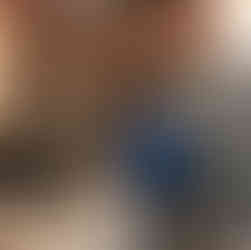

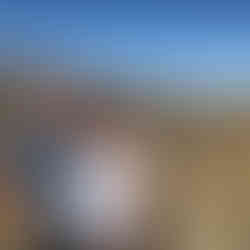



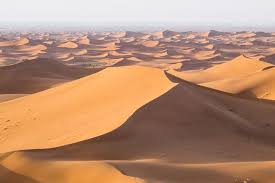
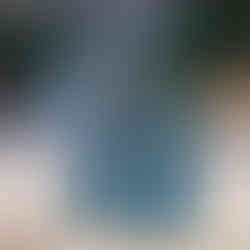

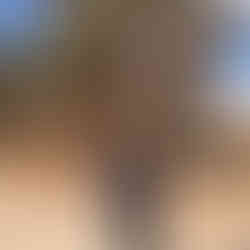

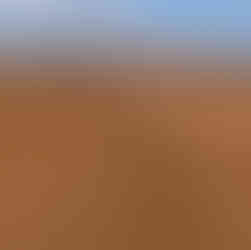

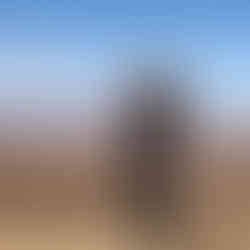

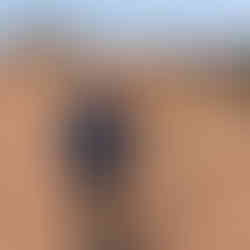

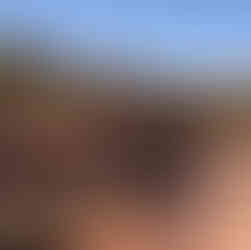

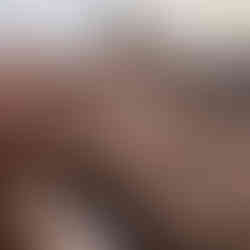

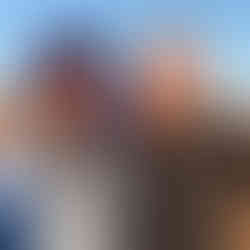


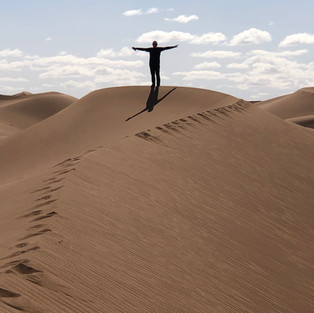








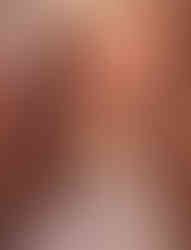

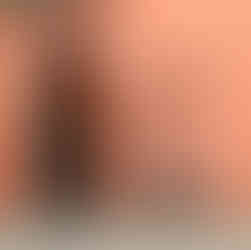

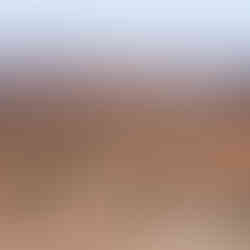

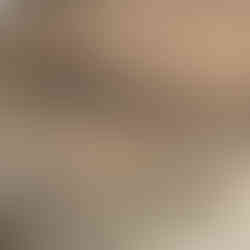

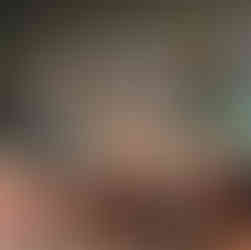






Comments